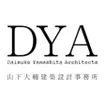
House IRFN
ARCHITECTS
Daisuke Yamashita Architects
PHOTOGRAPHS
Takeshi Yamagishi
STRUCTURE ENGINEERS
Sasaki Structural Consultants
GENERAL CONTRACTORS
KUDO-KOMUTEN
ARCHITECT
Daisuke Yamashita
STRUCTURE ENGINEER
Motoshi Inukai
GENERAL CONTRACTOR
Jin Otagiri
AREA
35 m²
LOCATION
Chuo City, Japan
CATEGORY
Houses
YEAR
2023
This residence is for a married couple with two children. It was built on a typical small plot in a highly dense urban area.
The steel structure building comprises a structural frame of H-beam 125 x 125 millimeters for columns and beams. Five spans of 2.4 x 3 (2.4+0.6) meters grid are placed in a plan view, and four spans of 2.4 x 2.4 meters grid are stacked for a section view.
Its stacked studios are an incredibly simple layered composition linked by a full-height stairwell extending from the middle grid to the rooftop.
Creating multiple oblique axes juxtaposed with the vertical axis within a volumetric depth and height against a narrow front aims to create a sense of diverse distances and depth.
This is accomplished by the spiral motion of split-level rooms sandwiching the staircase, distorting the planar axis, and carefully laying limited openings.
Introducing complexity in the sequence of movement avoids a direct link between the simplicity and formality of the composition and the monotony of space recognition.
In its practical state, the building has an impromptu and temporary appearance, with only the structural framing, exterior walls, and windows.
It is furnished with minimum fixtures and some purposeful décor. If anything, it lacks aspects.
This is a low-cost project with little room for sophistication and perfection. However, this situation could be interpreted as a positive response to the underlying nature of an increasingly unwarranted heterogeneous city.
In any case, finishings, fixtures, household equipment, and habitation devices, as well as the addition of new floors and rooms, will be adjusted accordingly to accommodate the shift in urban environments, family structures, and in-demand residential spaces.
There may even be a change in building usage. The framing and open space allows for proactive modifications within the context of a living space.
This is an unfinished residence that contains never-ending changeability.
Both the architecture and city is still unassimilated, only serving as a small shelter holding its ground against the city.
Gently embracing the environment and evolving together in the future, consideration of the meaning of coexistence with the city in the "present' shall continue.





















